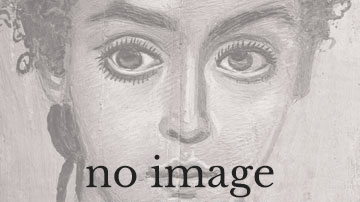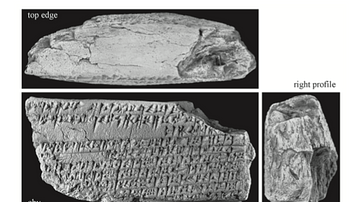Search
Search Results

Video
Enuma Elish | The Babylonian Epic of Creation | Complete Audiobook | With Commentary
This is the complete audiobook of the Enuma Elish : The Babylonian Epic of Creation that also comes with commentary. I hope that you all enjoy this awesome work that helps us better understand ancient Mesopotamian Mythology, Religion and...

Video
Babylonian Bricks (82nd & Fifth)
http://82nd-and-fifth.metmuseum.org/bricks Explore this object: http://82nd-and-fifth.metmuseum.org/two-panels-with-striding-lions-babylonian-31.13.1-.2 "It always had this possibility to come alive in a very real sense." 82nd &...

Video
The Poor Man of Nippur - World's first film in Babylonian
"The Poor Man of Nippur" is a c. 3,000-year-old comic folk tale in Babylonian language. The main manuscript is a clay tablet from 701 BC found at the site of Sultantepe, in South-East Turkey. Recounted by a third-party narrator, it tells...

Video
82nd & Fifth: Babylonian Lions
http://82nd-and-fifth.metmuseum.org/bricks Explore this object: http://82nd-and-fifth.metmuseum.org/two-panels-with-striding-lions-babylonian-31.13.1-.2 "It always had this possibility to come alive in a very real sense." 82nd &...

Video
Cradles of Civilization - Babylonian Math
In the sixth segment of Dr. Neiman's second lecture, he reviews Babylonian advances in astronomy and mathematics. He also credits the Babylonians with devising some of civilization's most basic concepts: dividing the circle into 360 degrees...

Video
The Babylonian mind
Trace the legacy of Babylonian discoveries and ideas, including their mathematical system based on 60 and their desire to predict the future. With British Museum curator Irving Finkel. http://www.britishmuseum.org/about_this_site/audio_and_video/exhibitions_-_archive/babylon_-_video_archive/babylonian_mind_video.aspx...

Article
New Gilgamesh Fragment: Enkidu's Sexual Exploits Doubled
Sometimes it is the smallest discoveries that have the largest impact. When Alexandra Kleinerman and Alhena Gadotti found a new fragment of the Epic of Gilgamesh in 2015 CE, it did not seem to be particularly impressive. The broken tablet...

Definition
Mesopotamian Literature
Ancient Mesopotamian literature developed c. 2600 BCE after scribes, who had formerly been record keepers, began composing original works in the region of Sumer. The Sumerians invented writing c. 3500 BCE, refined the script c. 3200 BCE...

Definition
Cyrus the Great
Cyrus II (d. 530 BCE), also known as Cyrus the Great, was the fourth king of Anshan and the first king of the Achaemenid Empire. Cyrus led several military campaigns against the most powerful kingdoms of the time, including Media, Lydia...

Definition
Tukulti-Ninurta I
Tukulti-Ninurta I (reigned 1244-1208 BCE) was a king of the Assyrian Empire during the period known as the Middle Empire. He was the son of Shalmaneser I (reigned 1274-1245 BCE) who had completed the work of his father, Adad Nirari I, in...